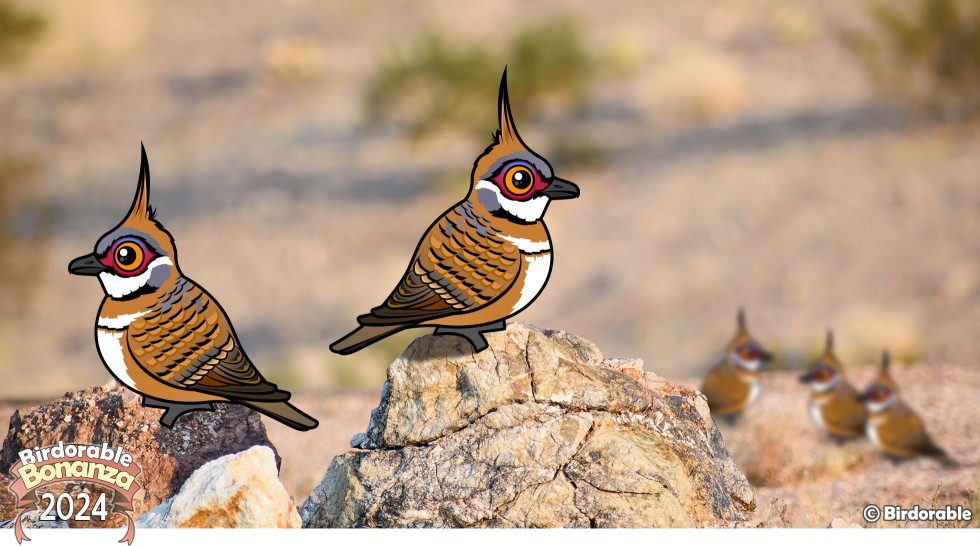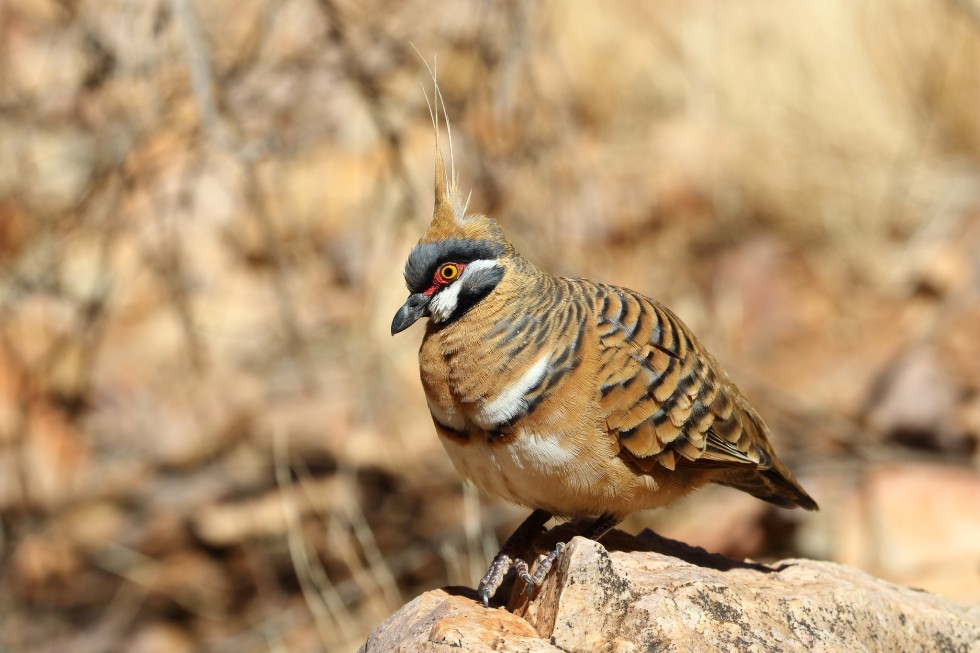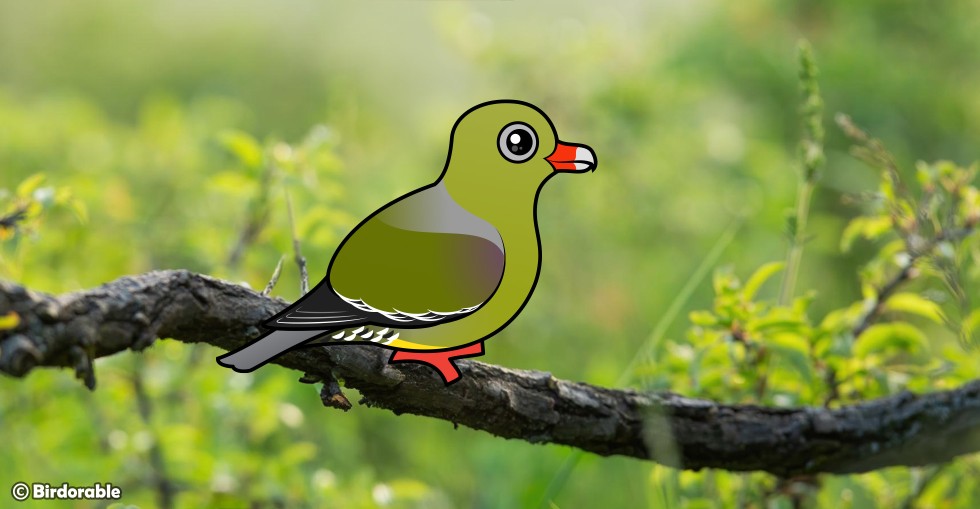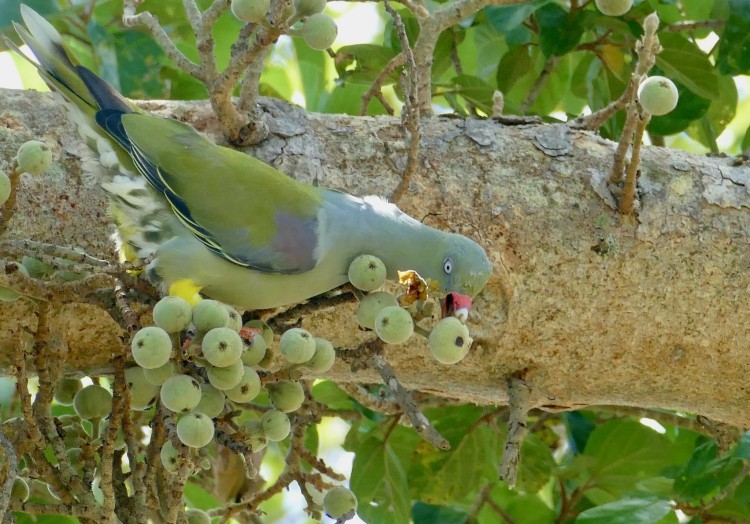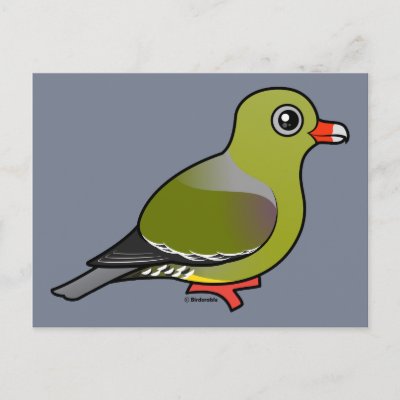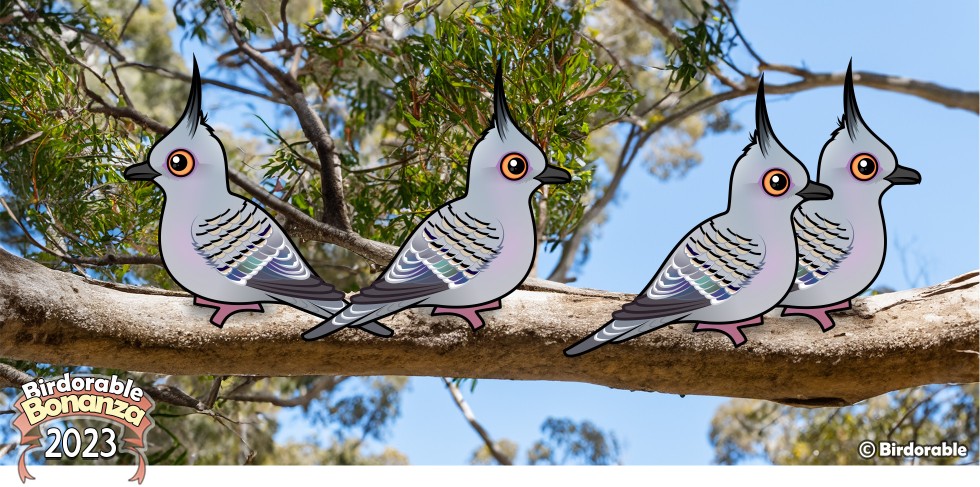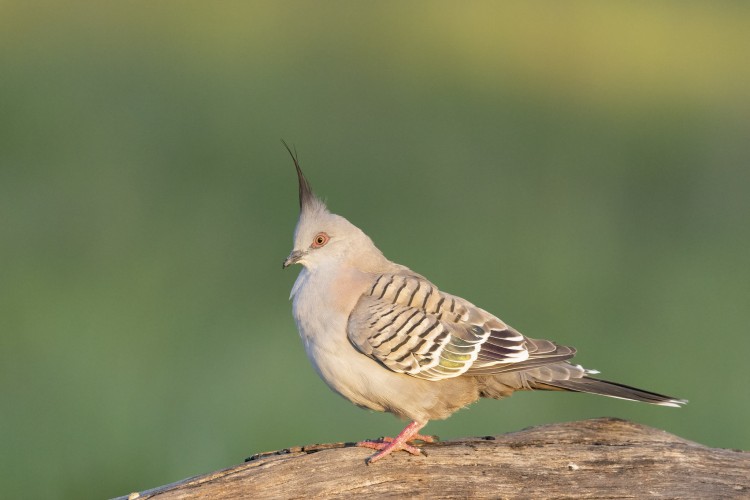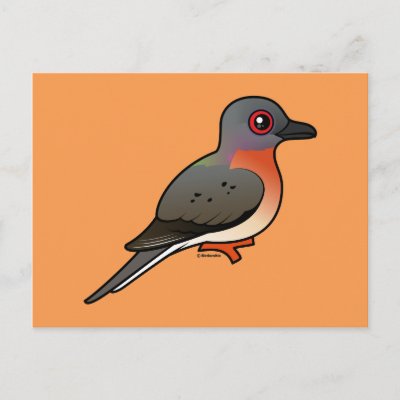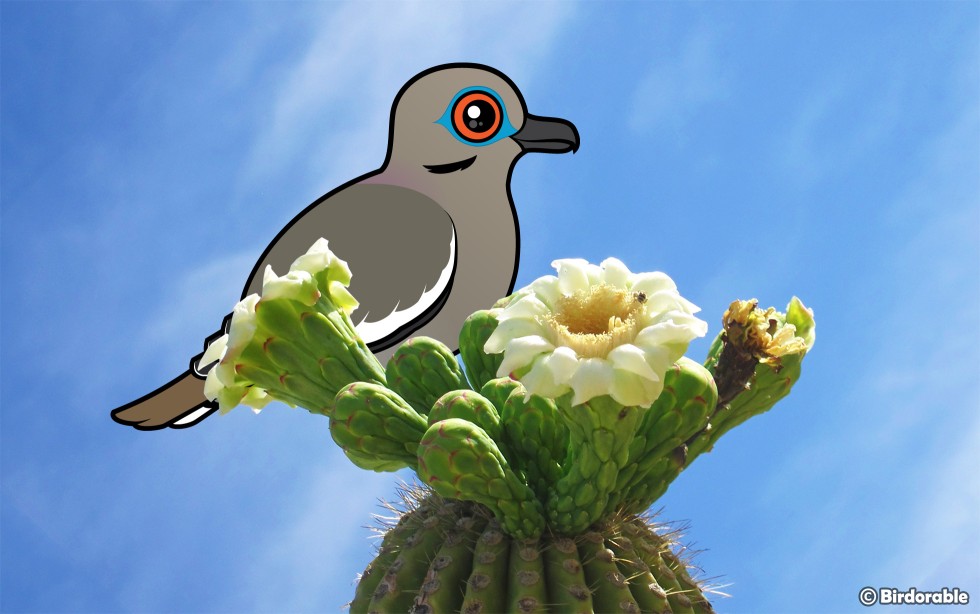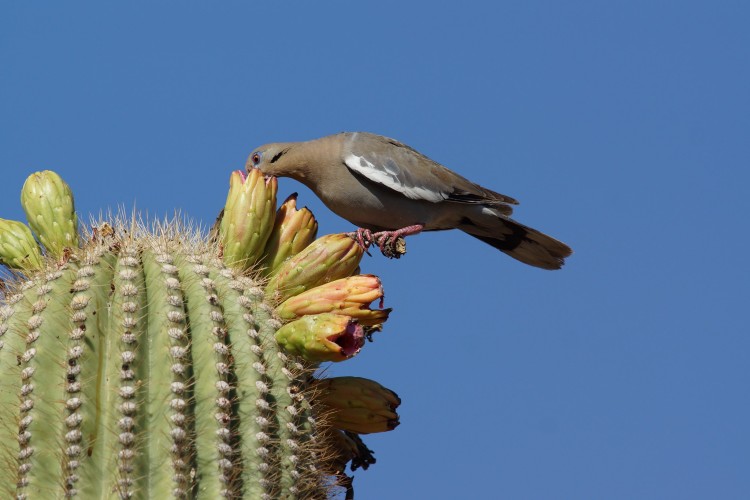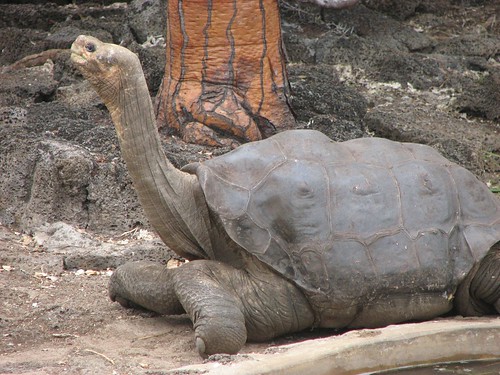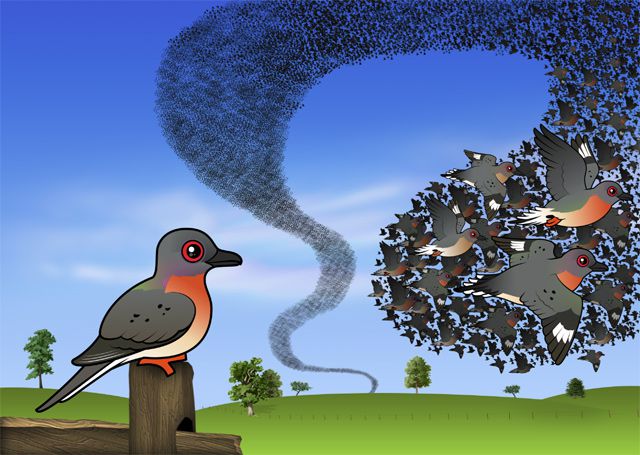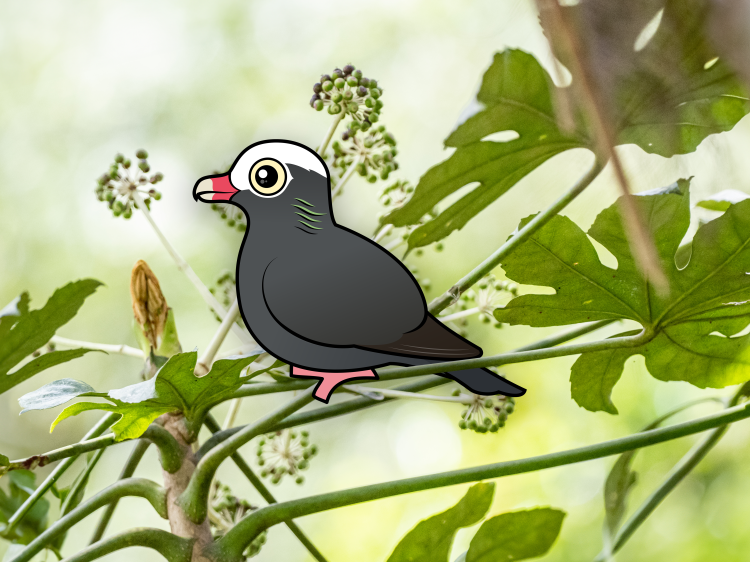
The White-crowned Pigeon is a large tropical pigeon found mostly in the Caribbean and parts of southern Florida. Known for its distinct white cap, this species may be an important seed disperser in its native habitats. Despite its striking looks and ecological role, the White-crowned Pigeon faces serious threats and is considered Near Threatened by the IUCN.
Adult White-crowned Pigeons are dark slate-gray overall, with a contrasting bright white patch on the top of the head. The neck often has a glossy green or purple sheen, and the bill is red with a white tip. They are about the size of the Rock Pigeon, with a longer tail and different head shape. Males and females look similar.
This pigeon species lives in coastal mangroves, hardwood hammocks, and tropical forests. It's most commonly found in the Caribbean islands, including the Bahamas, Cuba, Jamaica, and Puerto Rico. In the U.S., it breeds in the Florida Keys and southern tip of the Florida peninsula, but its presence there is more limited.
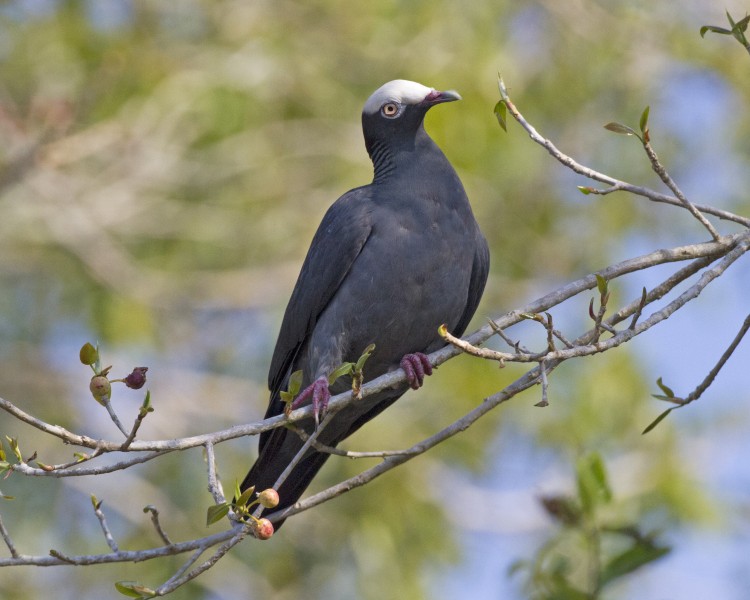
White-crowned Pigeon by Lip Kee Yap [CC BY-SA 2.0]
One of the most interesting things about White-crowned Pigeons is their reliance on two different habitats. They usually nest in remote coastal mangroves to avoid predators and human disturbance, but they travel inland to forage for food. Their diet includes the fruits and seeds of a wide variety of native trees and shrubs, including poisonwood, figs, and blolly. This feeding behavior makes them key players in maintaining tropical forest diversity.
Unfortunately, the White-crowned Pigeon faces several threats. Habitat loss is a major concern. Development and agriculture have reduced both nesting and foraging grounds. In Florida, for example, much of the native hardwood hammock forest has been cleared. Hunting also impacts populations in parts of the Caribbean, where pigeons and their squabs (babies) are still legally or illegally harvested.
These birds are also highly sensitive to human activity. Because they are so shy and need quiet areas for nesting, they are easily disturbed by noise or nearby development. Conservation efforts focus on protecting nesting sites and ensuring that feeding grounds remain intact and connected to each other. In some regions, hunting restrictions have been enforced to give the population a chance to recover.
White-crowned Pigeons are not often seen outside their range, so spotting one in southern Florida or the Caribbean can be a real treat for birders. They’re especially active during the breeding season from May to September, when they can be seen flying between their nesting and feeding areas.
If you’re lucky enough to live where these birds are found or are visiting the area, keeping an eye out for their strong, direct flight and that tell-tale white crown might reward you with a sighting. Supporting local conservation efforts and planting native trees can also help ensure these unique pigeons stick around.










